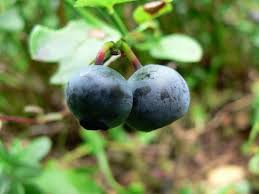Did you know our gut houses tons of bacteria. Good and bad both. As you are reading this post, there is a war going on between the good and the bad – some 1,000 species of bacteria are duking it out, trying to establish dominance. Why should you care? Because whether the good bacteria in your gut or the bad triumph doesn’t just decide how well you digest your dinner, respond to allergens and fend off diseases—it also helps determine how much weight you’re likely to gain. Or lose.
Beware!! Raisins, the dried form of grapes can hurt your teeth and make you put on weight!
Yes! Bacterias also govern your weight management! “Simply put, if you get the microbiome—that collection of bacteria inside you—healthy, you will lose weight,” says Raphael Kellman, MD, a New York City physician and author of The Microbiome Diet. “It’s less about eating a certain percentage of carbohydrates, protein and fat than about correcting the overgrowth of unhealthy bacteria, which is making you crave the wrong foods, triggering inflammation.”
Also Read: How can you beat Type II Diabetes? Here is how!
This is big news: There are trillions of microbes in your belly that will—if you feed them well—help you fight flab and win.
- Check your 2 P’s : Probiotics are a type of good bacteria, similar to the ones that already reside in your gut. Ingesting these organisms aids digestion and helps change and repopulate intestinal bacteria to balance what doctors refer to as “gut flora.” Prebiotics are plant-fiber compounds, also found in food, that pass undigested through the upper part of the gastrointestinal tract and help stimulate the growth of good bacteria. When pre- and probiotics are combined, they become an intestinal power couple (or, in blunter terms, they kick nutritional butt).
- Intake Live Bacteria : Fermented foods deliver probiotics directly to the gut. A cup of yogurt a day? It’s a nice start. Look for products that say “live and active cultures” on the label, and be careful when it comes to fruit-infused flavors: Some are loaded with sugar, which can feed bad bugs, so be sure to check the ingredients and aim for fewer than 15 grams per serving.
- Fibers is Always Good : Foods that are high in fiber help promote the growth of friendly bacteria. Case in point: In a University of Illinois study, people who ate high-fiber snack bars experienced a growth of anti-inflammatory bacteria in their bellies
Did you know consumption of Indian Gooseberry or Amla, means consumption of the Nectar of Life?? - Mix Your Menu : One study showed that individuals who had a healthy weight, body mass index, waist circumference and blood sugar level were more apt to have high levels of three different types of bacteria—Firmicutes, Bifidobacteria and Clostridium leptum. What’s more, in a pair of French studies, people with diverse gut microbiomes were less likely to be obese or at risk of diabetes. Plus, their intestinal ecosystems were home to fewer pro-inflammatory bacteria. It’s easy to change up your meals: If you had salad with grilled chicken yesterday, for example, go with a fish taco or a tofu stir-fry today.
- Do Not Skip Meals : This one is a no-brainer. What you don’t eat is every bit as crucial as what you do add to your diet. Keep your gut flora fit by cutting back on these offenders.
Source : Healthdotcom



